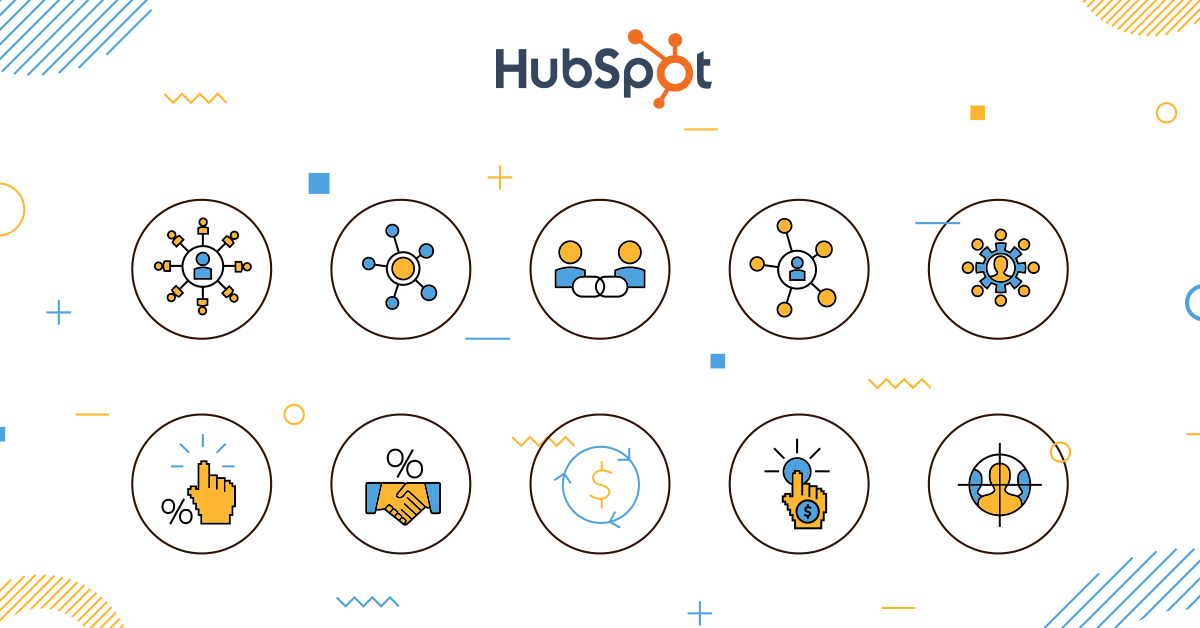-
MarTech Services
- HubSpot
- OneSignal
HubSpot
Technical Consulting
Partner with experts who understand your HubSpot systems and business needs inside out.
Revenue Operations
Drive revenue growth with tailored RevOps strategies designed for HubSpot users.
Hubspot Integration Services
Seamlessly integrate HubSpot with your existing tools to enhance operational efficiency.
Sales Enablement
Boost your sales team’s efficiency with focused HubSpot Sales Enablement solutions.
CRM Data Migration
Effortlessly migrate your CRM data to HubSpot with precision and support.
Hubspot Onboarding
Efficiently onboard clients to HubSpot, ensuring a smooth transition and rapid platform adoption.
HubSpot Administration
Maximize your HubSpot investment with expert management and optimisation tailored for HubSpot clients.
Marketing Assets Development
Develop, deploy, and manage digital assets, ensuring a fresh and engaging presence.
-
Solutions
-
Website Services
Website Development
We bring together expertise, creativity, and measurable results, making us the go-to choice for HubSpot website creation.
Website Migration
Our approach to website migration goes beyond a technical transfer; we prioritize a user-centric experience.
Website Maintenance
Optimize your online presence with effective, growth-driven websites focusing on nurturing website visitors, creating and deploying content, and tracking progress with precision.
Website Audit
Is your website performing at its peak? Our CMS Consultants are here to help you find out with our comprehensive Website Audit service.
-
Resources
-
Company
Clients
We have worked with clients from various industries across the globe, making our journey diverse and exciting.
Team
We put decades of experience where our mouth is. So what you get is market-tested and tried, not theory. We believe in plain speak, which we believe works better than jargon.
Solutions Partner
BlueOshan is not just a partner; we are among the most experienced and adept in the HubSpot ecosystem.
- Contact Us
Why forms and leads go hand in hand

Venu Gopal Nair
January 12, 2022

A form on a website or landing page is the point at which a potential customer takes the first step. The very act of filling it indicates interest. And the way a company responds to that interest decides how the sales game will play out.
Here are some significant statistics from HubSpot on why forms are still among the best ways to capture interest
Key Lead Capture Statistics and Findings
-
Forms aren’t dead. 74% of marketers are using web forms for lead generation, and 49.7% of marketers say that web forms are their highest converting lead generation tool.
-
Chatbots still have low adoption, but still, 17% of marketers are using chatbots today. However, only 6.5% say it’s their highest converting lead capture tool.
-
The average length of a web form in 2019 is about 5 form fields. Because contexts vary so wildly, this is neither good nor bad, though we have seen in consistent studies that fewer form fields usually result in higher conversion rates.
-
Conversion rates are highly variable and contextual. Reported conversion rates varied consistently across reported categories, but the mean conversion rate from our study is 21.5%.
-
Data-driven marketers are outpacing everyone. Running A/B tests, using form analytics, and running user tests are all correlated with higher form conversion rates and satisfaction with lead generation efforts.
-
Multi-step forms convert 86% higher. Only 40% of marketers use them, but those that do report 17% higher satisfaction rates with their lead generation efforts, and their self-reported conversion rates are 86% higher.
-
Only half of marketers use “lead magnets” to capture email addresses. Marketers who use lead magnets, or downloadable resources after a website visitor shares their email address, report marginally higher satisfaction rates and conversion rates than those who do not use lead magnets.
-
Ebooks are the most popular lead magnet, with 27.7% of marketers using them. However, 24.9% are using webinars and almost as many (21.3%) are using free tools to get email addresses.
-
The average Ebook length is between 5k and 10k words. Barely anyone writes an Ebook that is larger than 10,000 words, and the most common length is between 5,000 and 10,000 words.
-
Marketers overemphasize on total lead volume and not enough on lead quality. It's reported that only 56.4% of marketers have a lead qualification strategy, and only 39.5% are using any sort of predictive lead scoring. It appears we overemphasize on volume on leads without considering the quality of each lead.
When should you use multi-step vs single step forms?
The best way to answer that is to understand what the information will be used for. Companies tend to believe that the more information they have on a prospect, the better they will understand them.
You still see registration forms that ask for several personal details and it is the quickest way to ensure that lead generation will be an uphill task.
But sites that have to collect information as a regulatory requirement will benefit by splitting the form into multiple stages that can be saved and users can pick up where they left off.
Forms may look simple, but the more thought and effort you put into thinking and testing, the better results you will get
Compliance will still be an issue but getting people to fill long forms at a single sitting is also unlikely. Monotonous tasks tend to get postponed and filling up a form is never a pleasure. Most of us still have nightmares about the paperwork involved on loans or college admission forms.
Perhaps the only place where a long form is filled willingly are match making sites. People tend to think of their interests and motivations and their good and bad qualities so that they can get the partners they dream of.
On smartphones, forms are a different ball game
Typing on smartphones is a lot more tedious than on a keyboard. So, if you think your form is largely going to be filled on a smartphone, you’ll have to rethink the interactions altogether.
One way is to have radio buttons that can be tapped, rather than blank fields requiring long answers. Think of how you can cut the effort and then think more about form interactions.
The ‘completion indicator’ where a line moves forward at the base of the screen every time an answer is filled up provides an incentive to the user to keep going. Like traffic signals that count down to keep impatient motorists from rushing past the signal.
Ask for information useful to your product category – the less personal you get, the better
The size of the type and the way questions are framed also changes the rate at which forms are filled. Sliders, instead of typing in numbers or percentages could also be considered, since it goes with the flow of mobile screens. So, service satisfaction indicators or even gauging interest can be done with elegantly designed sliders and for users, it’s almost like playing a game.
HubSpot lets you use form builders to create up to 1,000 form fields using a dozen different field types. Generate up to 1,000 form fields using a dozen different field types. Use the type that works best: text, dropdown, radio select, check box, date picker, or something else.
With Marketing Hub Professional, and Enterprise, you get access to smart forms that adapt the questions to each website visitor and progressive profiling, which allows you to show new questions to returning visitors.
Talk to our consultants on how to structure HubSpot forms for lead generation for your business – there’s more to it than you think!

Venu Gopal Nair
Advertising and Branding Specialist, CEO - Ideascape Communications, A professional journey through the tumultuous years of advertising and communication, starting in 1984. Started out in the age of print, saw the changes with the entry of satellite TV and the momentous transition to digital. Advertising and branding today is vastly different from its practices in the 20th century and the last two decades have seen dramatic changes with smartphone domination. As a Creative Director turned CEO, making the transition personally and professionally has been a tremendous experience.
Related Articles

August 4, 2022

January 2, 2023

September 6, 2022

